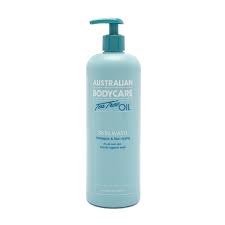Why you get ingrown hairs after waxing
Ingrown hairs. The most common and frustrating part of getting waxed regularly. They occur when either the hair has curled around and grown back into the skin or has never pushed through the surface and just started growing underneath the skin.
You can either see the hair under the surface of the skin, or you might get raised red bumps that look almost like spots.
Here are two honest facts for you:
1. Ingrown hairs increase the more you wax. As hairs become weaker, it is harder for them to break through the surface of the skin, so end up growing just underneath as described above. In my eyes, this is a small price to pay for weaker, slower-growing hairs.
2. Despite what you might have read or been told, the softly, softly approach to ingrown hairs just doesn’t work. You need a focused, targeted treatment to really tackle ingrown hairs.
There are no two ways about it when it comes to ingrown hairs, you need to bring out the BIG GUNS. Don’t bother dry brushing or using a regular exfoliator. No amount of superficial scrubbing will help if the problem is below the surface of the skin.
Instead, follow the steps below to reduce (and in some cases rid yourself of) ingrown hairs.
Just as an aside, the reason it’s quite important to tackle ingrown hairs is that sometimes they can become infected and inflamed, known as folliculitis. A course of antibiotics is often prescribed to clear the infection, but it’s obviously much better to prevent it happening in the first place!
Step 1: Preventing Ingrown Hairs
Reduce the chances of ingrown hairs by wearing loose fitting clothes after a waxing treatment, and change into freshly laundered clothing as soon as possible after the treatment itself. For 24 hours after hair removal, hair follicles are open so you want to reduce the possibility of dead skin, dirt or grime getting into the hair follicle before it has a chance to close over.
Make sure that any therapist you see cleanses your skin after a treatment (not just before) as this helps to reduce risk of infection as well.
If you are prone to ingrown hairs it might be worth investing in an anti-bacterial shower gel to use between treatments. I recommend Australian Bodycare Body Wash which contains 2% tea tree, a high enough percentage to be anti-bacterial but not so concentrated that it will irritate skin (see below).
Step 2: Reducing and Removing Ingrown Hairs
If you see any ingrown hairs beginning to form (either because you can see the hair itself under the skin, or because there are red, raised bumps on the skin) then at this point it’s no use using a traditional sugar or salt based body exfoliator. What you need to use is a product containing a beta-hydroxy acid called Salicylic Acid (or aspirin which forms the basis of Salicylic acid).
Salicylic Acid works in two ways.
Firstly it softens keratin, a protein that forms a part of the skin structure. This helps to loosen the top layer of dead skin making it easier to remove, allowing the hairs to gently come to the surface of the skin.
Secondly, it is more oil soluble than other acids (such as lactic or glycolic) which means it seeps into the pores and unclogs them.
Both of these actions help the hairs to ‘pop’ out, minimising the chance of the hair getting stuck and possibly becoming infected.
Great products for ingrown hairs include:




Natural ways of reducing ingrown hairs:
You can make your own Salicylic Acid lotion by combining 1 – 2 crushed aspirin tablets with a quarter cup of warm water. Use a cotton bud to apply to ingrown hairs.
Reducing inflammation can also be achieved by bathing in a warm (not hot) bath with 1 cup of Epsom salts. Epsom salts are essentially magnesium which most effectively absorbed through the skin. Magnesium also reduces inflammation which is why it’s good for ingrown hairs.
Ingrown hairs can be unsightly, uncomfortable and cause scarring if picked (hands up, we’ve all done it). By using the guidance above you can be sure you’re doing all you can do minimise the peskiest side-effect of waxing.
As always if you have any questions about waxing or any other beauty treatments, please send me an email to [email protected] and I’ll do what I can do help.











Great advice, thanks Lucy!